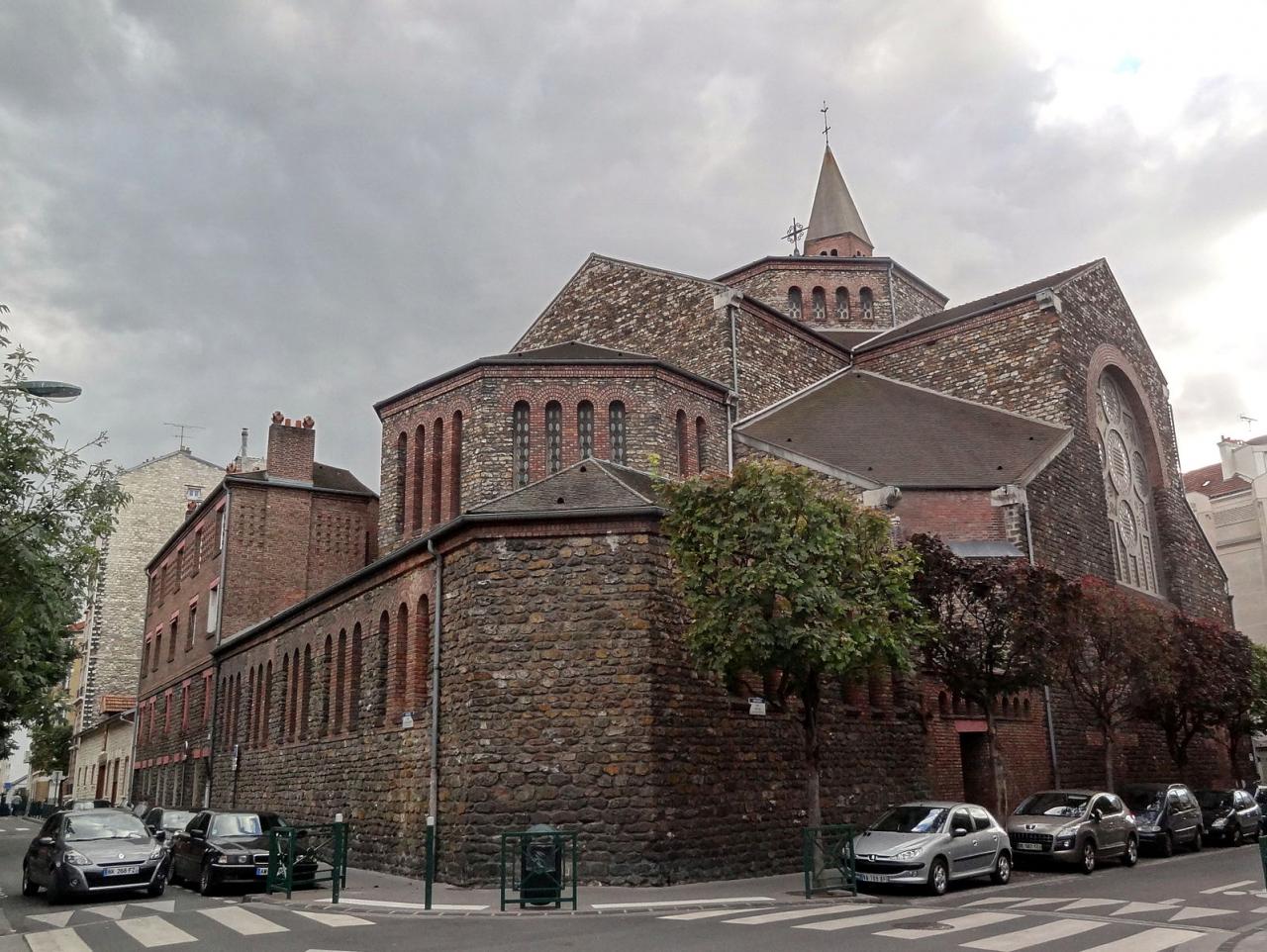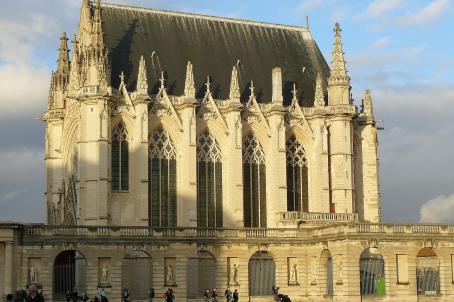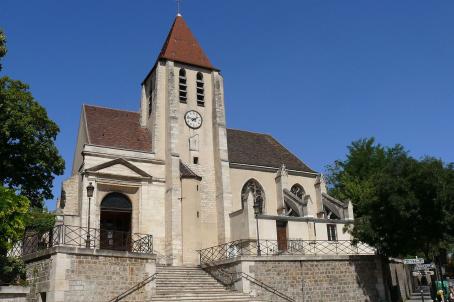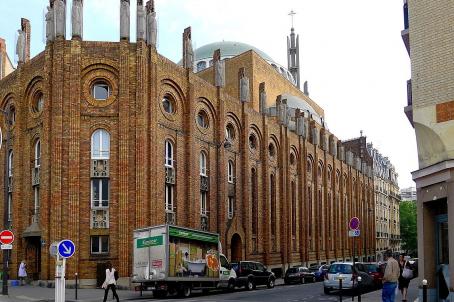Church of Saint-Louis
Built in the 1920s, the Saint-Louis de Vincennes church was designed before the First World War. This shows the audacity of the young architects Jacques Droz and Joseph Marrast who, from the outset, chose to use the new material in architecture that reinforced concrete represented, to design a space dedicated to worship free of traditional walls and pillars. In addition to this, there was an immediate desire to turn it into an interdisciplinary artistic project heralding the revival of the sacred art of the inter-war period. Listed as a Historic Monument, it is one of the rare churches of this period in France, entirely preserved.
About this building
The architects designed a building with a centred plan, referring to Byzantine architecture; four large reinforced concrete arches delimit a single nave while giving the impression of a Greek cross; at their crossroads they bear an octagonal dome whose bays provide zenithal lighting. The hexagonal bell tower is 50 m high. The walls of the Saint-Louis church are made of millstones, sometimes crossed by a red brick apparatus. The interior decoration is the work of the Ateliers d'arts sacrés, founded in 1919, and includes frescoes by Maurice Denis and Henri Marret, ceramics by Maurice Dhomme, ironwork by Raymond Subes, sculptures by Carlo Sarrabezolles and Armand Boutrolle, glass canopies combining concrete and glass, all unique works recently completed by an organ designed by the organ builder Denis Lacorre.






